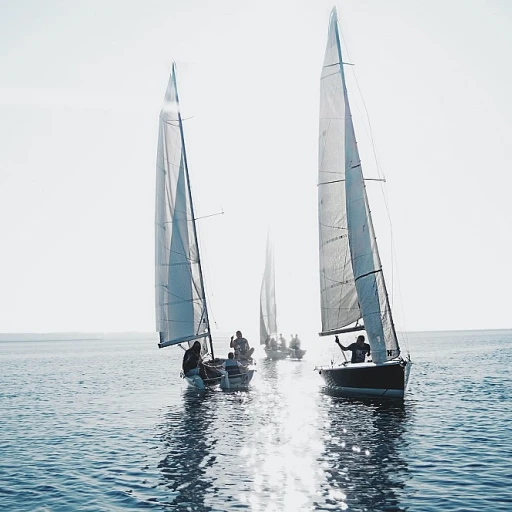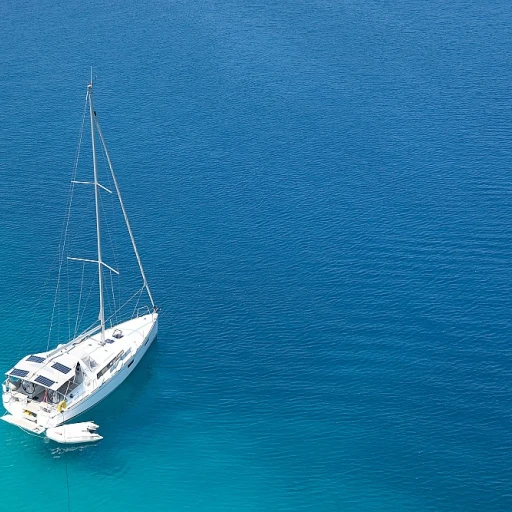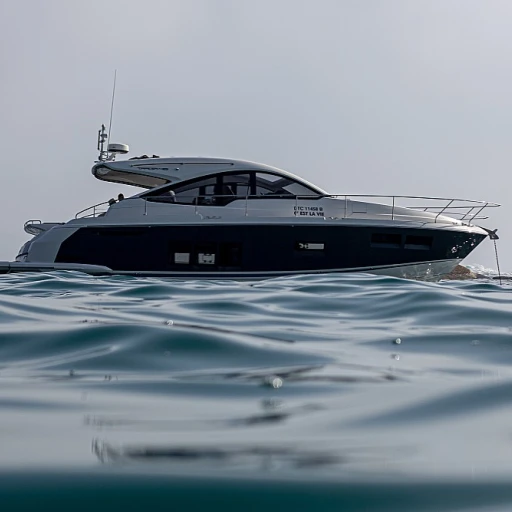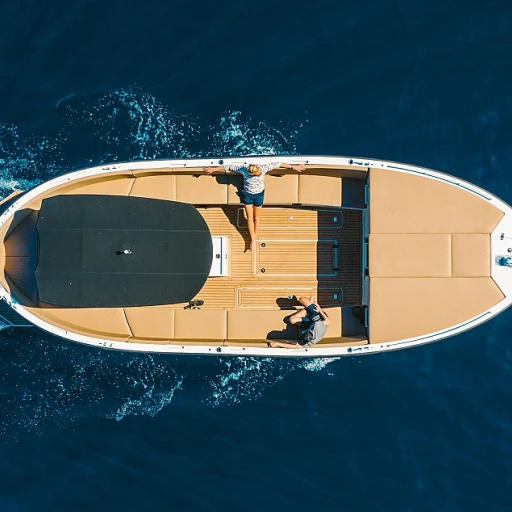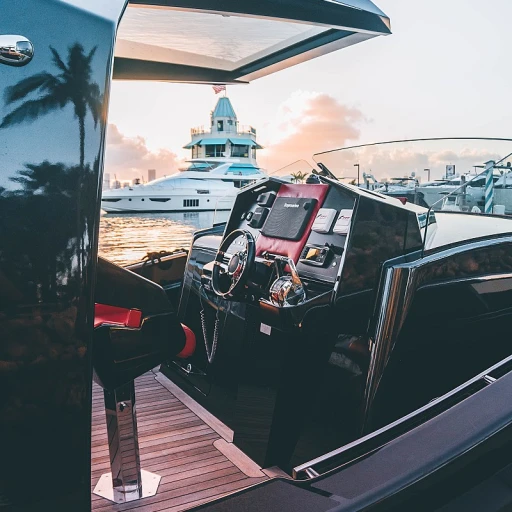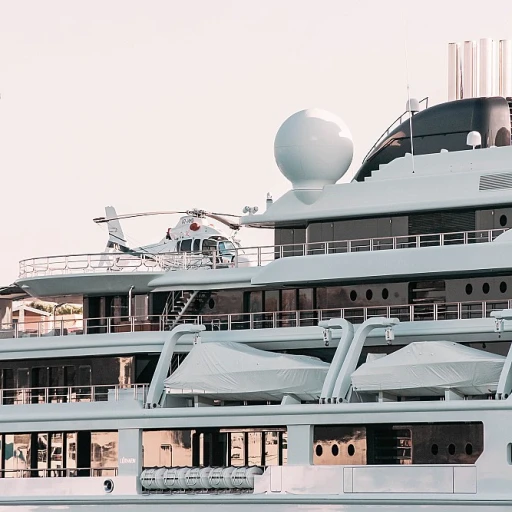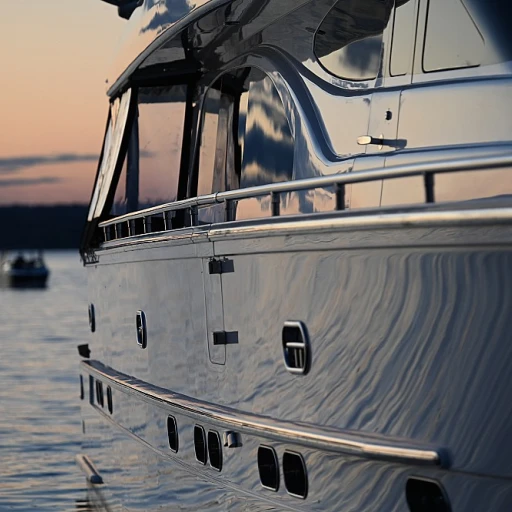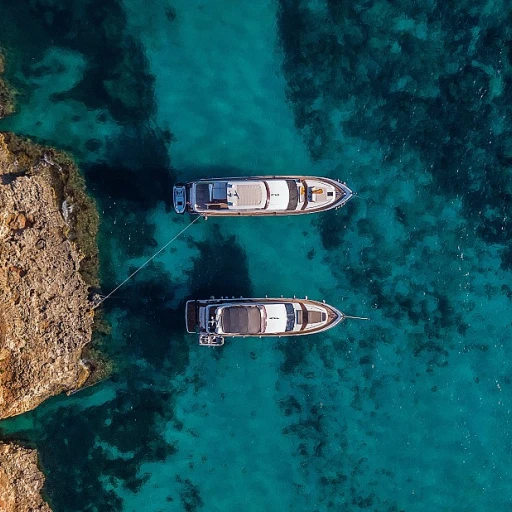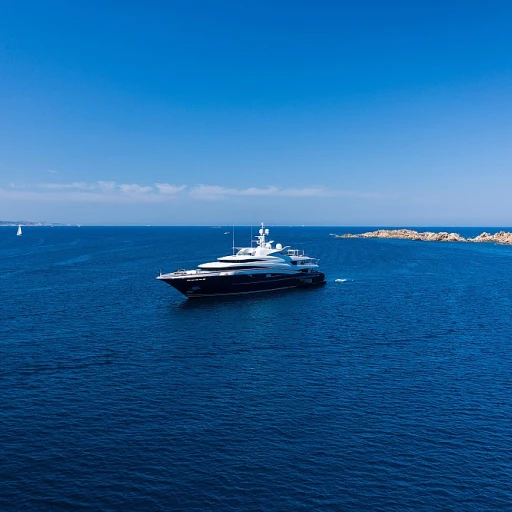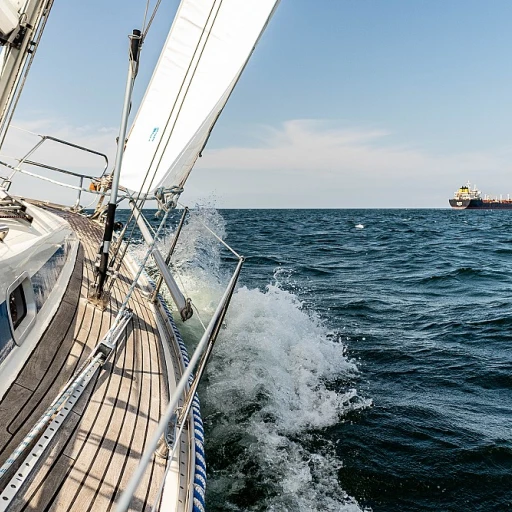Understanding Jetski Anchors
Getting to Grips with Jetski Anchors
When it comes to enjoying the thrill of a jetski, having a reliable anchor is crucial for safety and convenience. Whether you're taking a break on a serene lake or docking at a bustling beach, understanding the role of anchors can significantly enhance your experience. Anchors are essential for securing your jetski in place, preventing it from drifting away due to currents or wind. They're particularly important in shallow water areas where the risk of movement is higher.
Jetski anchors are not just about keeping your watercraft stationary; they also play a part in protecting your investment. A well-chosen anchor can prevent damage to your jetski and ensure that it remains a reliable companion on your aquatic adventures. From sand anchors to folding grapnel types, there are various options available, each suited to different conditions and preferences. These anchors are often part of an anchor kit that includes a rope and a bag for easy storage.
For those who are new to the world of jetskis or even seasoned enthusiasts, selecting the right anchor can be a game-changer. It's important to consider factors such as the type of water you'll be navigating, whether it's sandy beaches or rocky shores, and the size of your jetski. A small, lightweight anchor might be perfect for a quick stop, while a more robust option could be necessary for longer stays or rougher waters.
As you delve deeper into the nuances of jetski anchors, you'll find that their importance extends beyond mere functionality. They are a vital component of your overall safety gear, akin to the essential yacht safety equipment that every owner must update regularly. For more insights into optimizing your jetski adventures, consider exploring proven techniques to boost your yacht's fuel efficiency, which can complement your understanding of effective anchoring.
Types of Jetski Anchors
Exploring Different Anchor Types for Your Jetski
When it comes to securing your jetski, understanding the various types of anchors available is crucial. Each type offers unique benefits and is suited for different water conditions and environments. Let's dive into the most common types of jetski anchors you'll encounter.
Folding Grapnel Anchor
The folding grapnel anchor is a popular choice for jetski enthusiasts. Its design features multiple prongs that fold up for easy storage in a small bag, making it ideal for small boats, kayaks, and paddle boards. This anchor works well in rocky or coral-laden areas, providing a strong hold by gripping onto underwater obstacles. However, it may not be the best choice for sandy or muddy bottoms.
Mushroom Anchor
The mushroom anchor is another option, particularly effective in shallow water with a soft bottom. Its shape resembles a mushroom, allowing it to sink into the sand or mud, creating a suction effect that holds your jetski in place. This type of anchor is often used for smaller vessels, including fishing kayaks and paddle boards, due to its simplicity and effectiveness in calm conditions.
Sand Anchor
As the name suggests, the sand anchor is designed specifically for sandy environments. It's an excellent choice for beach outings, where you need to secure your jetski on a soft, sandy bottom. This anchor digs into the sand, providing a reliable hold. It's a lightweight option, making it easy to carry in an anchor kit and deploy quickly.
Choosing the Right Anchor
When selecting an anchor for your jetski, consider the type of water you'll be navigating. For instance, a folding grapnel might be ideal for rocky areas, while a mushroom anchor could be perfect for shallow, sandy waters. Understanding these options will help you make an informed decision, ensuring your jetski remains secure in various conditions. For further insights on boosting your marine mileage, check out proven techniques to boost your yacht's fuel efficiency.
Choosing the Right Anchor for Your Jetski
Finding the Perfect Anchor for Your Jetski
When it comes to selecting the right anchor for your jetski, there are several factors to consider that will ensure your watercraft remains secure, whether you're enjoying a leisurely day at the beach or engaging in some seasonal maintenance activities. The type of anchor you choose can depend on various elements such as the environment, the nature of the seabed, and your specific needs.
Here are some key considerations to guide your choice:
- Environment: Consider where you typically use your jetski. If you frequent sandy beaches, a sand anchor might be ideal. For rocky or weedy areas, a folding grapnel anchor can provide better grip.
- Size and Weight: Jetskis are smaller than most boats, so a small, lightweight anchor is usually sufficient. However, ensure it's heavy enough to hold your ski in place, especially in shallow water.
- Material: Stainless steel anchors are durable and resistant to corrosion, making them a popular choice for those who frequently use their jetskis in saltwater.
- Anchor Type: From mushroom anchors to kayak anchors, each type serves different purposes. A mushroom anchor might be perfect for calm waters, while a grapnel anchor is better for more challenging conditions.
- Budget: Prices can vary widely, so it's important to find an anchor that fits within your budget without compromising on quality and safety.
In addition to the anchor itself, consider investing in a complete anchor kit that includes a rope and a bag for easy storage and transport. This can be particularly beneficial for those who use their jetskis for activities like fishing or paddle boarding, where stability is crucial.
Ultimately, the right anchor will depend on your specific needs and the typical conditions you encounter on the water. By taking these factors into account, you can ensure your jetski remains secure, allowing you to focus on enjoying your time on the water.
Installation and Usage Tips
Proper Installation for Secure Anchoring
When it comes to installing your jetski anchor, the process is crucial for ensuring your personal watercraft remains secure, whether you're on a sandy beach or in shallow water. Begin by selecting an appropriate spot to drop your anchor. For most situations, a folding grapnel or a mushroom anchor is ideal due to their versatility in different terrains like sand or rocky bottoms. Once you've chosen the right spot, ensure your anchor rope is long enough to accommodate the depth of the water and any potential changes in tide. A good rule of thumb is to use a rope length that is three to five times the depth of the water. This helps maintain the right angle and tension, ensuring the anchor holds firm.Usage Tips for Optimal Performance
After installation, it's important to test the anchor's hold. Gently reverse your jet ski to set the anchor, making sure it digs into the seabed. This is especially important in areas with strong currents or where other boats and small crafts, like fishing kayaks or paddle boards, are present. For those using a sand anchor or a kayak anchor, ensure the anchor is buried properly in the sand. You can do this by manually pushing it into the sand or using the weight of the jet ski to help it dig in. This is particularly effective in shallow waters.Ensuring Safety and Efficiency
Safety is paramount when anchoring. Always keep an anchor kit on board, which should include a durable anchor bag for easy storage and transport. A stainless steel anchor boat chain can add extra security, especially in deeper waters or when anchoring near a beach with a lot of activity. For paddle board or canoe jet enthusiasts, a ski paddle or paddle board small anchor can be a great addition to your kit, providing stability while you enjoy your water activities. Regularly check your anchor and rope for wear and tear, replacing any damaged parts to maintain the safety and efficiency of your anchoring system. By following these installation and usage tips, you'll ensure that your jetski anchor performs effectively, providing peace of mind as you enjoy your time on the water.Maintenance and Care for Jetski Anchors
Keeping Your Jetski Anchor in Prime Condition
Maintaining your jetski anchor is crucial for ensuring its longevity and effectiveness. Regular care not only extends the life of the anchor but also guarantees safety when you're out on the water. Whether you have a mushroom anchor, a folding grapnel, or a sand anchor, each type requires specific maintenance steps.
Regular Cleaning and Inspection
After each use, especially in saltwater, rinse your anchor with fresh water to remove any salt, sand, or debris. This prevents corrosion, particularly if your anchor is made from stainless steel. Inspect the anchor for any signs of wear or damage, such as cracks or bends. Pay close attention to the joints and moving parts of folding grapnel anchors, as these can be prone to rust and stiffness.
Storage Tips
Store your anchor in a dry place when not in use. Many jetski enthusiasts opt for a dedicated anchor kit bag to keep the anchor and its components organized and protected. This is especially useful if you frequently switch between different watercraft, such as kayaks, paddle boards, or small boats.
Rope and Chain Maintenance
The rope or chain attached to your anchor is just as important as the anchor itself. Regularly check for fraying or kinks, and replace any damaged sections. If using a chain, ensure it is free of rust and properly lubricated to prevent seizing. For those using a ski paddle or paddle board, a lightweight rope is recommended to avoid unnecessary weight.
Seasonal Care
At the end of the boating season, give your anchor a thorough clean and inspection before storing it for the winter. This is also a good time to apply a protective coating to metal parts to prevent rust during the off-season. For members of yacht clubs or those involved in fishing kayaks, sharing maintenance tips can be beneficial.
By following these maintenance and care tips, you ensure that your jetski anchor remains reliable and ready for your next adventure, whether you're anchoring in shallow water, near a beach, or among the stars of the yacht industry.
Jetski Anchors in the Yacht Industry
The Role of Jetski Anchors in the Yacht Industry
The yacht industry is not just about luxury and grandeur; it also encompasses a wide range of watercraft, including jetskis. Jetskis are a popular addition to yachts, providing thrill and adventure on the water. However, to ensure safety and stability, understanding the role of jetski anchors within this industry is crucial. Jetskis often accompany yachts as they offer a convenient way to explore shallow waters and sandy beaches where larger boats cannot venture. Anchors for these personal watercraft (PWC) are essential for securing them in place, whether you're taking a break on a beach or fishing near a reef. In the context of the yacht industry, jetski anchors are indispensable for several reasons:- Versatility: Jetski anchors, such as the folding grapnel or mushroom anchor, are designed to hold in various seabeds, from sand to rocks, making them suitable for diverse environments.
- Portability: Given the limited space on yachts, these anchors are compact and often come with a convenient bag or anchor kit, allowing for easy storage and transport.
- Compatibility: They are compatible with other small watercraft, including kayaks and paddle boards, making them a versatile choice for yacht owners who enjoy multiple water activities.
- Durability: High-quality materials like stainless steel ensure that these anchors withstand harsh marine conditions, offering reliability over time.


